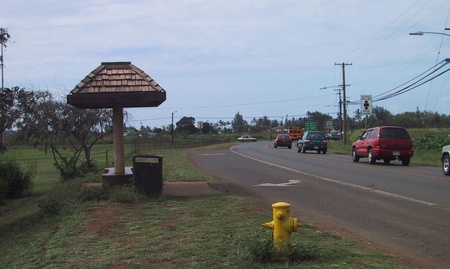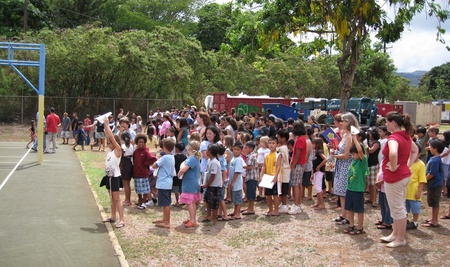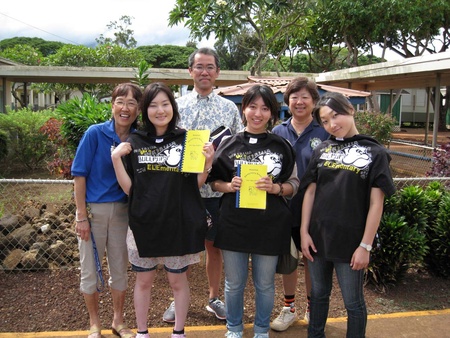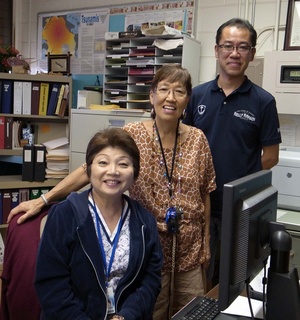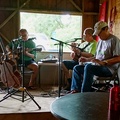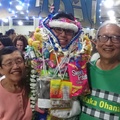Let's continue with the elementary school story. Last time (part 5, " Japanese values that may be disappearing - changing Hawaiian culture" ), we touched on the kindness and deep consideration of M-san and L-san. According to them, the virtue of Japanese culture inherited by Japanese people is "to do the best you can for others." In this regard, let's take a look at the school of teacher A, who was mentioned in part 3, " T-shirts ."
The elementary school where Teacher A works is a remote school, more than an hour away from Honolulu by freeway. It is said to be the first place where Japanese immigrants settled, and is located in a rural town where sugarcane was cultivated until the end on the island of Oahu. There are no other elementary schools beyond that point. It is also the area where the movie "Picture Bride" is thought to have been set.
Ms. A served as vice principal for many years, but was demoted in 2009 and is now a teacher in the role of curriculum coordinator. She is a recipient of the Milken Award, an award given to outstanding teachers across the United States. Ms. C, Ms. A's cousin, is also a staff member who plays an important role. Both of them live in a village just a few minutes' drive from the school. All of Ms. L's classmates have retired, and Ms. A is the only one still working full-time.
When I first visited the school in the winter of 2001, I was able to hear about some of the school's initiatives that would be unthinkable in Japan. I have visited every year since then, and in November 2006 and September 2007, I took three students on tours and had the opportunity to hear about them. Since then, I have taken students there almost every year. I would like to introduce here a mixture of what I heard while being shown around the school and what we discussed in the office.
There are a number of homeless children at this school - and by homeless I don't necessarily mean families who are wandering, but families who live in tents on the beach or in their cars - who come to this school.
- What is the situation at home?
Many children, not just those from homeless families, have problems at home. Parental drug addiction is a serious problem. Some families adopt grandchildren and register them as children because their parents are not fulfilling their role as parents. Some children are born with congenital disabilities due to drug use during pregnancy.
- In that case, what is the standard of living, including financial matters?
This is a headache. Breakfast and lunch are supposed to be prepared by schools. There are three levels of children: full exemption, half exemption, and no exemption, depending on the family income. There are many children whose only place to eat a hot meal is at school, so sufficient consideration must be given to their nutrition.
Is food the only problem?
Homeless children in particular have no money to buy clothes and other daily necessities, so they have to make do at school. A school store has been set up at the school, and it is stocked with a variety of items, including T-shirts, underwear, sandals, towels, toothbrushes, toothpaste, stationery such as notebooks and pencils, and food such as canned goods. Cash is not accepted here, and items are purchased with school money. School money is given as a reward for helping with cleaning during recess, or organizing bookshelves and storerooms.
- How do you collect the items that are stocked in the school store?
Towels are provided through donations from hotels. There are a lot of hotels in Hawaii. We also grow plants as part of an extracurricular activity called the Academy. We sell them at the school festival to earn money that can be used to purchase new plants.
- What does the operation of the school store reveal about the situation of the children?
Children who buy stuffed toys and books can be judged to have relatively stable families. The same goes for stationery. Children who buy towels, T-shirts, underwear, etc. should be careful. Children who buy canned goods are the ones you should be most careful of. Such children's families are often in disarray, and they either don't have parents or they have parents but they are not fulfilling their roles. There are also serious concerns about their nutrition. They can be seen as providing for their families despite being elementary school students, so careful consideration is required.
An approach and perspective identical to the one stated above was introduced on TV Tokyo's "Aloha Girl," broadcast on June 10, 2007, in a program that featured an elementary school in the Waianae district of western Oahu.
-- Caring for children who come from unstable family backgrounds is an important issue.
Yes. So this school is trying to deal with this by adopting the slogan "Make School a Haven." "Haven" means a place of refuge or rest. The idea is to make the school a place of refuge and a refuge from all kinds of unfortunate events. It is a shelter from family troubles such as domestic violence and sexual abuse. Teachers go home at 2 or 2:30 after classes, but the school itself is obligated by rules to stay open until 5:00. It is extended until 9:00 as a service. Not many children come to school during the extended hours, but the fact that the school is open until late at night seems to provide mental stability. In any case, it is important to make the school seem like a fun place.
- Do you have any other thoughts about the recent trends in education reform?
There are a lot of problems, such as the trend toward emphasis on academic ability and distorted education centered on tests. Fortunately, I am good at obtaining budgets, so it is a little easier to run my school than other schools, but Bush's education policy of tightening budgets through tests and school evaluations only exhausts those in the field and does no good. Even without that, we have been working hard for a long time and it will continue to be the same in the future. Evaluation is necessary, but if the perspective of evaluation is wrong, education will go from bad to worse. Isn't the same thing happening in Japan?
- Can you tell us about some specific recent changes?
Field trips, that is. Including off-campus learning. The rules state that they should be held twice a year. While some schools have stopped doing so due to the trend of placing emphasis on academic ability, this school holds them four times. This is because it is important for children in rural areas to have many experiences, including city experiences. Also, because they started placing too much emphasis on math and science, there wasn't enough time for music and art and craft. It goes against the school's ideals, but if math and science grades are evaluated, they can't have poor results. It's unwilling.
The above is what Teacher A said. (First published in my book "Multicultural Education and Intercultural Understanding Learning in Hawaii: How is "Fairness" Perceived?" Nakanishiya Publishing, 2011)
During a visit in 2007, the principal suddenly came into the room during an interview and announced that a new budget had been granted. Teacher A was so happy that he could now take the fifth graders to a ball game. Each grade had been invited to a winter league American football game. This shows how much effort Teacher A and the school put into obtaining a diverse budget.
Also, when I visited with three students, Ms. C was a friendly and energetic woman who was no less friendly than Ms. A, and was always really kind to me. While she was showing me a classroom, Ms. C asked the students, "Did you notice which child had a handicap?" All three of us looked at each other in surprise, and of course I looked around and blushed. We had no idea. There were five such children among the 25 students.
Hawaii has an implementation rate of inclusive education (where children with disabilities and children without disabilities learn in the same classroom) that is almost 100%, which is of course the highest in the United States. Inclusive education requires a lot of effort. It cannot be achieved without the enthusiasm, love, and expertise of the teachers and staff. In order to maintain and further develop such "power," in-school training is very important. At the elementary school in Hawaii that I have been attending, I am allowed to attend in-school training for teachers and staff as much as possible. Among them, the training led by Teacher A himself is outstanding in quality. He thoroughly reads previous research such as papers, and his theory is well supported. If you are not careful, you may be asked for your opinion. But no one feels nervous. All the food brought is delicious, and of course the training is done while eating. As I will explain later, this relaxed and serious attitude is important above all else.
Teacher A also held Parents Classes. However, he stopped them almost 10 years ago. He said that it was because many parents who didn't need to come were coming, and the parents who really should come were not showing up. This was funny because it was the same in both Japan and Hawaii. Is there anything we can do about it?
There are monster parents in Hawaii too. Monster Parent is a Japanese-English term, but it was understood by everyone. In Japanese society, "Monpe" as work clothes has been known for a long time. So when I tried shortening it to Mom-Pe, it was a big hit and quickly became popular at Teacher A's school. Teacher A is personally shocked by Mom-Pe's attitude (see "Residents with an 'entitled' mindset" at the end of Part 5 " Japanese values that may be disappearing - the changing culture of Hawaii" ), but he seems to be dealing with it enthusiastically as an unavoidable job.
So far, I have introduced various aspects of the elementary school where Mr. A works, while referring to his way of thinking and working. As mentioned at the beginning, it is clear that the school is supported by the Japanese-American spiritual culture of "doing everything you can to help." The roots of this spiritual culture are the virtues of Japanese culture that Japanese immigrants brought with them. However, it does not seem that the virtues of Japanese culture and the Japanese-American spiritual culture are the same.
The meaning of "doing one's best" may be different for Japanese and Japanese-Americans. In Hawaii, people do their best within the limits of what they can do or what they should do. Teacher A is also very proactive in taking vacations. He loves going to Las Vegas, and whenever he has time off, he goes there, has fun, and comes back refreshed. And then he produces results again. But what about Japanese people? In all kinds of industries, it is not uncommon for them to go far beyond what they can do and even exceed their limits. The limits of what can be done and what should be done are quite vague at first, and then they gradually expand. This leads to a decline in quality and a loss of motivation. Perhaps this is the cause of the fatigue felt by Japanese people today.
I used to be an athlete and a speed skater, and now I play golf. I feel like I still have the energy to perform at my best.
© 2016 Seiji Kawasaki



